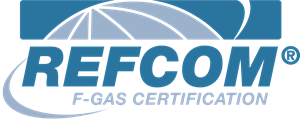When a commercial walk-in cold room reaches the end of its lifespan, proper decommissioning is critical. Failing to remove old refrigeration systems correctly can lead to safety hazards, refrigerant leaks, and environmental damage.
Businesses looking to replace, repurpose, or dispose of an outdated cold room must follow a structured removal process to ensure compliance with UK environmental laws and industry regulations.
This guide outlines the step-by-step process of decommissioning and removing old cold rooms, including safety precautions, legal requirements, and disposal best practices.
Why Proper Decommissioning is Important
1. Compliance with Environmental Regulations
Cold rooms contain refrigerants, insulation materials, and electrical components that must be disposed of according to UK laws.
- Many older units contain ozone-depleting refrigerants (e.g., R-22), which require specialist removal.
- Insulation panels often include chemicals that must be safely handled.
- UK F-Gas regulations mandate proper refrigerant recovery and disposal.
Failure to comply can lead to fines and environmental damage.
2. Safety Considerations
Old cold rooms contain hazardous materials, and improper removal can pose risks such as:
- Gas leaks from refrigerant pipes.
- Electrical hazards from live wiring.
- Structural damage if panels are removed incorrectly.
Proper decommissioning ensures a safe worksite and prevents accidents.
Step-by-Step Guide to Cold Room Decommissioning
Step 1: Perform a Full System Shutdown
Before dismantling begins, the cold room must be completely powered down.
- Disconnect electricity and refrigeration systems.
- Shut off gas supply lines if applicable.
- Allow remaining coolant or refrigerant gases to settle before removal.
Certified technicians should always handle this process to ensure safety.
Step 2: Refrigerant Recovery and Disposal
UK law requires controlled recovery of refrigerants from old cold rooms.
- A certified professional must extract the refrigerant using industry-standard methods.
- The gas is either recycled, reclaimed, or safely destroyed.
- Documentation of proper disposal should be retained for regulatory compliance.
Never vent refrigerants into the atmosphere, as it is illegal and environmentally damaging.
Step 3: Dismantling Cold Room Panels and Insulation
Once refrigerants are removed, the structural components can be dismantled.
- Wall panels and flooring should be taken apart carefully to avoid contamination.
- If the cold room has foam insulation, special disposal methods may be required.
- Metal components (e.g., shelving and doors) should be sorted for recycling or disposal.
Proper dismantling reduces waste and allows for reuse of salvageable parts.
Step 4: Electrical and Mechanical Disconnection
- Power cables, lighting fixtures, and control panels must be safely removed.
- Compressors and fan units should be detached from power sources.
- Drainage and water lines should be sealed off to prevent leaks.
If any components can be reused, they should be stored properly or recycled.
Step 5: Transport and Disposal
Once dismantled, cold room components must be properly transported for disposal.
- Refrigeration units and insulation materials must be disposed of at certified recycling centres.
- Metal and salvageable components can often be repurposed or resold.
- Old equipment must not be abandoned, as improper disposal may result in fines.
Businesses should work with certified waste disposal companies to ensure full compliance.
Get a fast no obligation quote today
The Cost of Improper Cold Room Disposal
Ignoring proper decommissioning can lead to serious consequences, including:
- Environmental fines for refrigerant gas leaks.
- Legal liabilities if insulation or chemical waste is not handled correctly.
- Workplace hazards, including fires or structural damage.
Investing in professional decommissioning services protects business operations and the environment.
References
- UK Environmental Waste Regulations, 2024
- F-Gas Compliance and Refrigerant Disposal Guide, 2023
Author Bio
Dr. Julian Carter is a highly experienced thermal systems expert with over 15 years in the field, holding a PhD in thermal systems. His career spans academic research, consulting, and teaching, focusing on air conditioning and refrigeration systems. Dr. Carter bridges the gap between theoretical advancements and practical applications, providing expert insights to organisations like ClimateWorks, where his guidance informs decision-making and industry best practices. Notably, he has worked on international projects with organisations such as Daikin Industries, the International Institute of Refrigeration (IIR), and the United Nations Environment Programme (UNEP). These collaborations addressed energy efficiency, sustainable refrigerants, and advanced cooling technologies. Currently a lecturer at Edinburgh University, Dr. Carter combines his expertise with a passion for educating the next generation of engineers and advancing climate control technologies.





